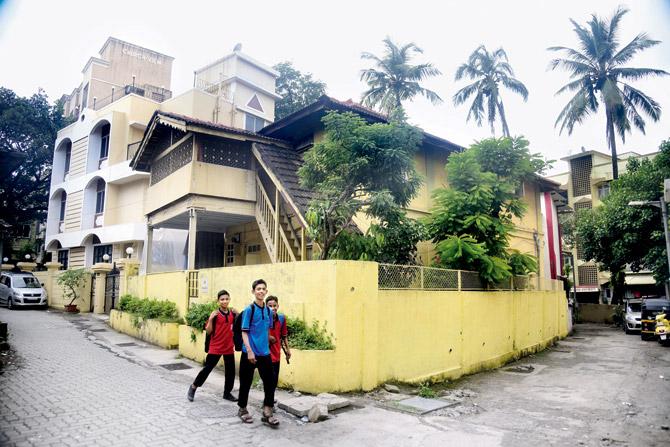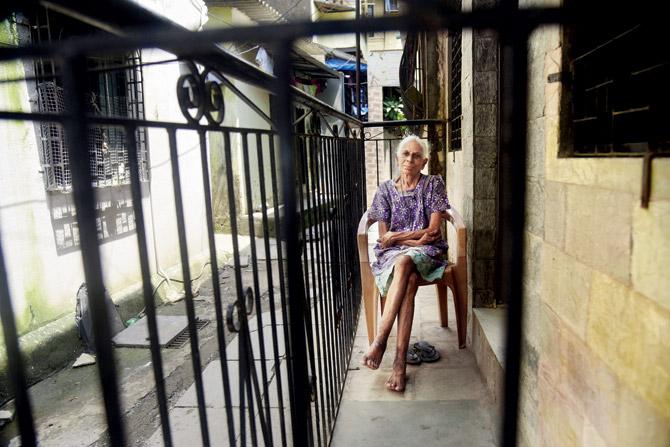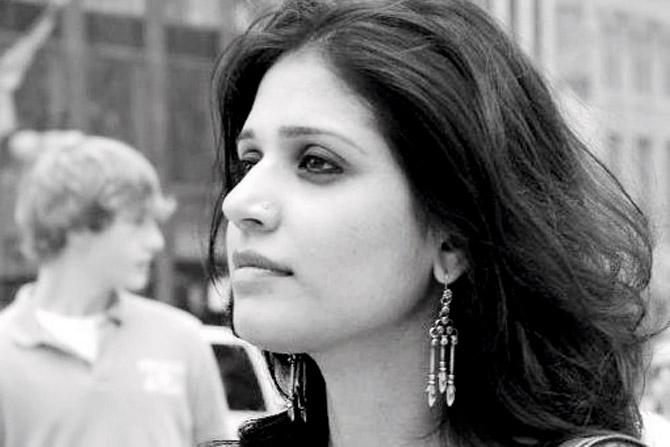A guided tour trains the spotlight on the central suburb to tell Mumbaikars that it's not all glass and steel

The Holy Cross Church is an important pivot of the walk
The plotting of Kurla and its landmarks on online maps mirrors the common perception of the neighbourhood in the city. A rather blank, amoeboid swathe of land, its northern limit is marked by Phoenix Market City, while Shri Balasaheb Thackeray Samaj Kendra seals off the southern end. The syncretism of the area begins to reveal itself only after considerable zooming in, which too terminates in a drop pin for the Holy Cross Church. Somewhat misrepresentative of Kurla, one should imagine, considering it is named after the eponymous East Indian village that it grew out of.

The area is dotted with homes that combine Portuguese- style architecture and the coastal architecture of farmers
"That's the reason we are doing the walk because in the grand narrative of Bombay, some of these pockets and communities have got overlooked," says Shriti K Tyagi, founder of Beyond Bombay and Beyond Delhi, initiatives that explore the lesser-known side of the two cities through tours. She will be conducting a walk called Knowing Kurla as part of Alliance Française de Bombay's annual Heritage Walks project, in partnership with Piramal Museum of Art.

The neighbourhood is home to the East Indian community
"Because of the emergence of Bandra Kurla Complex, the real Kurla has been relegated to the margins. We think of it as a ghettoised place with a lot of crowd and chaos, and a few landmarks like Kohinoor, the American School of Bombay and the mall. But when you walk through the lanes of Naupada, Culbavour and Kurla Christian Village, you will feel like they are a piece cut of Bandra's Ranwar and Chimbai villages. They have their own histories and stories. They may not be as grand as those you would find in South Bombay, but they are stories nonetheless," Tyagi points out.

The area reminds one of Bandra's Ranwar village. Pics/Sameer Markande
Starting with Church Lane, which faces the massive glass facade of Phoenix Market City, the walk will take participants through the time when Bombay was under the rule of the Portuguese, and its impact on the demography of Kurla. The Kurla Christian Village, for instance, is an East Indian pocket of Christians who stem from Portuguese and Koli traditions. "Here, you will find pre-Christian customs à la Bandra, where devotees take off their shoes before entering the Mount Mary church," says Tyagi. The Holy Cross Church will be a crucial pivot of the walk.
The syncretic culture of Kurla inevitably finds its way to its culinary traditions. The best example for which is the bottle masala, which brings together coastal Konkani and East Indian ingredients. "The place of meat in dishes that come from these areas is unique, too," she says, adding that history and food will be interwoven in the walk.

Shriti K Tyagi
Traditional occupations of Kurla residents — "Culbavour" comes from the Kulbi farmers in the area — and how they changed over time give an interesting insight into the changing character of the area. While the Portuguese and British-era history of Kurla is documented, it is this modern-day dynamism that Tyagi found the most challenging to piece together.
"It took four months of research to shape up this walk. Yet, I have managed to scratch only the surface," she says. "Our lens of viewing the city is shrinking. The idea was to shift the gaze to a non-gentrified pocket of Mumbai."
ON: September 30, 10 am (limited seats)
MEETING POINT: Phoenix Market City, LBS Road, Kurla West.
REGISTER: communication.mumbai@afindia.org (registration compulsory)
Catch up on all the latest Mumbai news, crime news, current affairs, and also a complete guide on Mumbai from food to things to do and events across the city here. Also download the new mid-day Android and iOS apps to get latest updates
 Subscribe today by clicking the link and stay updated with the latest news!" Click here!
Subscribe today by clicking the link and stay updated with the latest news!" Click here!







